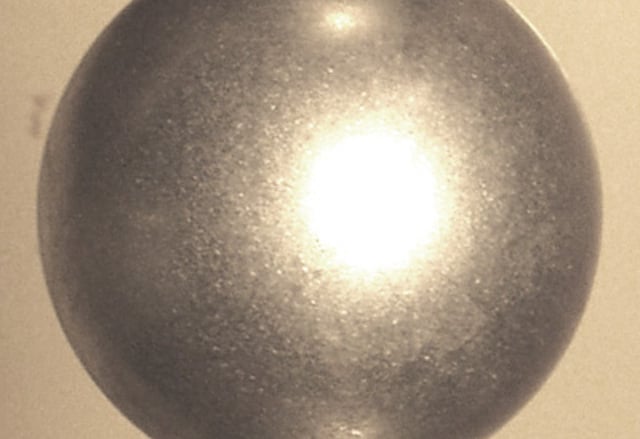As we’ve already seen, humans have a rich history of making bad choices before they know better. We will regularly play with and use deadly things until we take a step back and realize what we’re doing. Sadly, the cost of learning this lesson is often paid in lives.
10. Lawn Darts

One of the classic old school games of summer was lawn darts. It was perfect for a weekend camping, or a family reunion barbecue. You’d set up little goals and then hurl what was basically a weighted arrow across a lawn.
What the point of a lawn dart lacked in sharpness, it made up in bulk. The tips were usually heavy metal and while it wasn’t knife sharp; it was stick-in-the-soil sharp. That was the point. But a heavy metal spike that can stand upright in soil can also do the same thing in various body parts.
The sad fact is that several children died as a result of injuries sustained by playing lawn darts. And many, many more were injured. Between 1978 and 1986, over 6,000 people went to the ER thanks to lawn dart injuries. 81% of the victims were under 15.
The danger of lawn darts was known well before those injuries occurred. In fact, the toy was banned in the 1970s. However, manufacturers offered a concession – they would no longer market it as a toy or sell it in toy stores. They went back on the market and people still used them the exact same way because nothing changed except for a warning that it was not to be used by children.
By 1988 they were banned again, but some companies still sell kits that offer them in pieces, so it’s technically not a lawn dart until you put it together.
9. Lead

Lead is one of those elements that seemed extremely versatile and useful before we fully realized what was going on. As a soft, plentiful metal, it was easy to use to make all kinds of things from toys to paint. Unfortunately, lead is readily absorbed into the human body by breathing in dust or ingesting it.
Once inside, lead poisoning can cause brain damage as well as a host of other symptoms. A woman who has been exposed to lead can even transmit it to her baby because it’s stored in the bones and will transfer through her blood. That can cause developmental issues and more. And there’s really no minimum safe exposure to lead. If you have some in you, it’s not doing good things.
In 2016, lead contributed to around 540,000 deaths worldwide. And that’s in the modern world where we know the dangers and have been actively trying to not use lead for years now. Imagine what it was like 100 years ago when lead paint coated the world. By the year 2000 there were roughly 38 million houses that contained lead paint in America. Ten years earlier there were 64 million.
The safe lead levels for children set by the CDC are 5µg/dl. That’s 5 micrograms per deciliter of blood. A single lead paint chip if eaten by a child might have over 100 milligrams. With 1,000 micrograms in a milligram, you’re looking at a paint chip giving you maybe 20,000 times an acceptable dose.
8. Co-Sleeping

One of the most tragic things people did not realize was dangerous, and in fact many people still don’t understand is dangerous, is co-sleeping. That’s the act of simply sleeping in the same bed with your baby.
Proponents say this is a good way for mother and child to bond. However, evidence suggests that the risks are far too great for any potential benefits. Sharing a bed greatly increases a baby’s risk of suffering from Sudden Infant Death Syndrome. Every year, thousands of babies die from this condition.
Those who support mothers sleeping with babies point out the bonding experience and how babies are even meant to be with their mothers. Studies have shown how mothers, even totally asleep, instinctively cradle and protect the baby. The baby in turn is more responsive and at ease in the mother’s arms. But there’s a catch.
While a mother and baby may be biologically suited to spend time together even in sleep, biology didn’t invent your mattress. And it’s the mattress, the bulky padding and blankets and all the rest, that pose a risk of suffocation.
There’s also been an issue with parents who had a drink or two before going to bed, or sleeping with a baby on a sofa. In these cases, parents have actually rolled over and smothered their own children without realizing it.
The only bright side here is that, the older the baby, the less risk that is present. And the numbers that don’t include parents who have been drinking or sleeping on a couch are quite small. But when it comes to deaths, how many are acceptable under any circumstances?
7. Goat Testicle Transplants

It’s hard to imagine that there was a time when someone thought transplanting goat testicles into a human would be a good idea but there was, and it wasn’t. Today we understand how tissue rejection works, but in the early 1900s, John R. Brinkley had convinced many men that his procedure would restore virility and make them feel manly again.
Brinkley never actually graduated from medical school, though he had attended one. At the time, that was actually good enough to practice some medicine in Arkansas. Then, with the help of some scam credentials, he passed himself off as a full blown doctor.
After setting up a clinic and successfully treating a number of patients during the 1918 flu pandemic, there was little reason in the community at large to not trust that Brinkley was who he said he was. So when he started offering goat testicle transplants, it may have sounded entirely reasonable. Medicine is a very complex subject to a layman, afterall.
Brinkley promised elderly or otherwise afflicted men that he could make them whole again. And for years he made a lot of money doing it. In fact, he was so successful he bought a radio tower, started his own radio show, and became one of the first national medical talk show hosts, answering questions from around the country. He was like his era’s Dr. Drew, if Dr. Drew also killed his patients.
Word is that Brinkley was so successful he was performing 50 transplants a week at what would work out to $9,000 each when you account for inflation. As you might expect, with such a high volume, there were many side effects. Over 40 of his patients died from infection.
Despite his many failures, he was able to run hsi scam for almost 20 years before he finally had his medical license which, if you recall, wasn’t technically real in the first place, revoked. His broadcasting license was also revoked.
6. E-Cigarettes

When e-cigarettes and vaping first showed up, it was like an answer to the prayers of smokers. Many businesses touted how this new technology gave you all the benefits you like about smoking but got rid of all the drawbacks. It was supposed to be much safer according to many articles and blogs written around 2010 or so. And, since vape fluid comes in a veritable circus of flavors, it was very attractive to younger smokers.
The problem with e-cigarettes and their purported safety was no one had studied them at the time. They were only a year or two old, and studies had not been conducted to prove any of the claims made about them. Much of it was the assumption that, since you were just inhaling vapor and there was no tar or tobacco present, it had to be better.
Fast forward several years and the Mayo Clinic as well as the CDC have reports of thousands of e-smokers suffering severe lung damage. Many of the smokers had been smoking compounds with THC, and most had traces of vitamin E acetate in their lung fluid.
After warnings were issued, cases began to decline but they still exist. The fluid vaporized in e-cigarettes contains several toxic compounds, so there really isn’t a safe threshold for vaping.
5. Arthritis Meds

We know that in the past medicine was a little fast and loose. Things like cocaine and heroin got the job done for a lot of people. But that was ancient history and surely modern medicine is much safer. Except that’s not really the case. And arthritis medicine is a great example.
In the last couple of decades, not one but two major arthritis medications have proven to be disastrous beyond belief.
Pfizer’s Bextra was the subject of a massive lawsuit that saw Pfizer paying out $2.3 billion after pleading guilty to criminal charges. Pfizer had been promoting the drug for pain management with unapproved dosages and uses. The drug caused dangerous skin reactions in many patients which could have been deadly.
Merck’s arthritis drug Vioxx was somehow even worse than Bextra. The company hid data that suggested it caused an increased risk of heart attack in order to get it onto the market. That resulted in somewhere between 55,000 and 88,000 deaths as well as over 100,000 heart attacks. It took the FDA years to finally recall the drug.
4. Trampolines

What kid doesn’t love a backyard trampoline? It’s hard to see one and resist the urge to hop on and just go town. There are even trampoline parks that offer huge areas covered in trampoline for your bouncing fun. The only problem is the inherent danger of a trampoline.
It’s a common joke that a trampoline is an accident waiting to happen. There was an episode of the Simpsons that aired all the way back in 1993 featuring a scene with kids laid out all around one with broken bones and other injuries. It’s like the secret everyone knows.
The fact that it’s a joke may be why people don’t take seriously the fact that yes, trampolines are very dangerous. The American Academy of Pediatrics has recommended parents never buy trampolines for their kids or let them use one. They cause over 100,000 injuries per year. Nearly 5,000 are bad enough to lead to hospitalization. And a small handful result in death.
3. Rare Earth Magnets

A few years back, rare earth magnets were all the rage. A regular magnet is ho-hum but these little magnets were incredibly powerful. It took some upper body strength to pull them apart, and that was a novelty. There was even a company that sold spherical links of them called BuckyBalls as toys.
The problem with rare earth magnets is also the reason anyone wants them. They’re very strong. So when a child swallows more than one, as children tend to do, they will pull together inside the child’s body. Because their bond is so strong, anything between them,like soft tissue, is going to get crushed. Many of the victims end up with holes in their intestines.
One death has been reported as a result of children swallowing magnets, but a number of injuries have been sustained as well. About two-thirds of them required surgery to remove the magnets.
Swallowing a magnet seems silly, but the age range of victims was larger than you might think. Small children tend to put anything in their mouths and slightly older children might think they were candy. But a number of victims were into their teens because they had been trying to use their teeth to separate the magnets. A small percentage had accidentally swallowed them after using two on either side of their tongue to simulate a tongue stud.
2. Aqua Dots
Sometimes a toy seems like a good idea until you see how kids use it. Like the magnets, for instance. Swallowing is a hazard and you need to be wary of it. But sometimes a toy has a side effect so baffling it seems like no one could have predicted it.
Aqua Dots were tiny plastic beads that children could arrange in shapes and patterns. Get them wet and they stick together in whatever shape or design you created. Sounds pretty simple and fun when that’s all there is to it, but that was not all there was to it.
The compound that allowed Aqua Dots to stick together underwent a chemical change when it was ingested. In very simple terms, if you ate an Aqua Dot the coating turned into GHB inside of you. GHB, or gamma-hydroxybutyric acid, is a date rape drug.
An 18-month-old child swallowed some of the beads in 2007 and began vomiting soon after before slipping into a coma. The child survived with permanent brain damage as a result. Several other children also ended up in a coma before the manufacturer recalled the toy from the marketplace.
1. Arsenic

Today we recognize arsenic as one of the deadliest poisons in the world. Along with cyanide it’s one of those old school compounds that has popped up in murder mystery stories for decades. Unfortunately, the history of arsenic predates that by thousands of years and it had a long history of practical, if deadly, applications all around the world.
Amazingly, about 1/8 of a teaspoon of arsenic could kill an adult. Despite that, it was actually something people ate on purpose in the Victorian era. Women ate arsenic wafers in the hopes of lightening their complexions. Face creams and powders were laced with it to keep that pale, corpsey glow that was so desirable at the time. They even put arsenic in wallpaper because it made pretty colors.
Despite its known toxicity, arsenic is commonly added to chicken feed because it helps chickens grow. This practice was banned in Europe a few years ago when it was discovered that the arsenic you feed a chicken stays in the chicken and then is consumed by humans. However, North America still allows the practice.